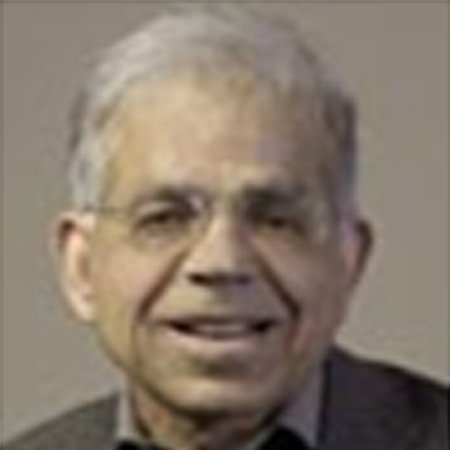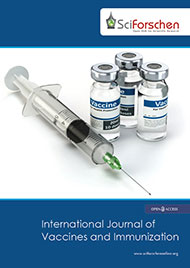
Professor of Microbiology & Immunology
-
Stanford University School of Medicine
Stanford, California, USA
Phone: (650) 725-4745
E-mail: a.matin@stanford.edu
Education
April, 1969 |
PhD |
Microbiology; University of California, Los Angeles |
Biography
The Matin laboratory studies improvement in pro-drug cancer chemotherapy; genetic and protein engineering to improve biological processes, such as bioremediation; microbial biofilms; cellular resistance to antimicrobial agents; and microbial stress response.
Research Interest
Cancer research; Biomolecualr engineering; Biofilms; Cellular resistance and virulence; Biology of low shear/microgravity; Bioremediation; Stress promoters; Stress sensing; Systems biology; Biotechnology.
Scientific Activities
Teaching Experience:
2000 - 2004 |
Member, Stanford Panel on human subjects, Stanford University |
1979 - 1982 |
Member, Stanford Recombinant DNA Panel, Stanford University |
1981 - 1982 |
Chair, Stanford Recombiant DNA Panel, Stanford University |
1985 - 1988 |
Chair, Department Admissions Committee, Stanford University |
1995 - 1996 |
Member, Administrative Panel on Biosafety, Stanford University |
2000 - 2004 |
Member, Stanford Human Subjects Panel |
2006 - 2012 |
Senator, Medical School senate |
2008 – 2012 |
Member, MS senate steering committee |
2009 – 2012 |
Chair, MS senate task force on posdoctoral affairs |
Professional Societies
- American Association for Cancer Research
- American Association of Gene Therapy
- American Society for Clinical Oncology
- American Chemical Society
- American Society for Microbiology
- Biophysical Society
- American Association for the Advancement of Science
- International Society for Microbial Ecology
- Society for Industrial Microbiology
- New York Academy of Sciences
- American Aerospace Medical Association
- American Society for Gravitational and Space Biology
- European Low Gravity Research Association
- Society of the Sigma XI
- American Association of University Professors
Patents
- Reducing chromium and/or uranium involves contacting them with a Escherichia coli nitroreductase polypeptide having amino acid alteration relative to wild-type enzyme, and produces enhanced enzyme kinetics for reduction of toxic metals
Patent Number(s): US2007254355-A1 - Cultivating magnetotactic bacterium, useful e.g. for enhancing contrast of magnetic resonance image, comprises obtaining isolated strain of magnetotactic bacteria, and cultivating the bacteria in growth medium comprising iron salt
Patent Number(s): US2010135912-A1 - Nitroreductase enzymes
Patent Number(s): US 07687474
Publications
- Singh R, Matin AC. Cellular response of Escherichia coli to microgravity and microgravity analogue culture. In: Effect of spaceflight and spaceflight analogue culture on human and microbial cells: Novel insights into disease mechanisms. New York: Springer, 2016. p. 259-82. (Available from the publisher.)
- Wang JH, Endsley AN, Green C, Matin AC. Utilizing native fluorescence imaging, modeling and simulation to examine pharmacokinetics and therapeutic regimen of a novel anticancer prodrug. BMC Cancer (2016) 16:524 (DOI 10.1 186/s12885-016-2508-6
- Matin A.C. , Stress, Bacterial: General and Specific, Reference Module in Biomedical Sciences. Elsevier. 08-Aug-2015 doi: 10.1016/B978-0-12-801238-3.02461-2 (Available from the publisher.)
- Masamitsu Kanadaa, Michael H. Bachmanna, Jonathan W. Hardy, Daniel Omar Frimannson, Laura Bronsart, Andrew Wang, Matthew D. Sylvester, Tobi L. Schmidt, Roger L. Kaspar, Manish J. Butte, A. C. Matin, and Christopher H. Contag. 2015. Differential fates of biomolecules delivered to target cells via extracellular vesicles. Proc Nat Acad Sci (USA). PNAS Early Edition, www.pnas.org/cgi/doi/10.1073/pnas.1418401112
- Jing-Hung Wang, Rachna Singh, Michael Benoit, Mimi Keyhan, Matthew Sylvester, Michael Hsieh, Anuradha Thathireddy, Yi-Ju Hsieh, A. C. Matin. 2014. Sigma S-Dependent Antioxidant Defense Protects Stationary-Phase Escherichia coli against the Bactericidal Antibiotic Gentamicin. Antimicrobial Agents and Chemotherapy 58 (10): 5964-5975.
- Haiyu Zhang, Adam L Cohen, Sujatha Krishnakumar, Irene L Wapnir, Selvaraju Veeriah, Glenn Deng, Marc A Coram, Caroline M Piskun, Teri A Longacre, Michael Herrler, Daniel O Frimannsson, Melinda L Telli, Frederick M Dirbas, AC Matin, Shanaz H Dairkee, Banafshe Larijani, Gennadi V Glinsky, Andrea H Bild and Stefanie S Jeffrey. 2014. Patient-derived xenografts of triple-negative breast cancer reproduce molecular features of patient tumors and respond to mTOR inhibition. Breast Cancer Research 2014, 16:R36 (http://breast-cancer-research.com/content/16/2/R36).
- Eswaramoorthy S, Poulain S, Hienerwadel R, Nicolas B, Sylvester M, Zhang Y, Berthoeau C, Van D-L, and Matin A. 2012. Crystal Structure of ChrR – A Quinone Reductase with the Capacity to Reduce Chromate. PLoS One, April 2012 | Volume 7 | Issue 4 | e36017.
- Benoit, MR, Conant, C, Ionescu-Zanetti, C, Schwartz, M, and Matin, A. New device for high throughput viability screening of flow-bioflims. 2010. Applied and Environmental Microbiology 76 (13): 4136-4142
- Barak, Y., F. Schreiber, S.H. Thorne, C.H. Contag, D. deBeer, and Matin, A . 2010. Role of nitric oxide in Salmonella typhimurium-mediated cancer cell killing. BMC Cancer 10: 146-152
- Michael R Benoit, Dirk Mayer, Yoram Barak, Ian Y Chen, Wei Hu, Zhen Cheng, Shan X Wang, Daniel M Spielman, Sanjiv S Gambhir, A Matin. 2009 Visualizing implanted tumors in mice with MRI using magnetotactic bacteria.Clinical Cancer Research 15 (16): 5170 – 5177.
- Steve H. Thorne, Yoram Barak, Wenchuan Liang, Michael H. Bachmann, Jianghong Rao, Christopher H. Contag and A. Matin. 2009. CNOB/ChrR6, a new prodrug enzyme cancer chemotherapy.- Molecular Cancer Therapeutics 8(2): 333-341.
- A Matin. Stress, Bacterial: General and Specific. Encyclopedia of Microbiology. (Moselio Schaechter, Editor), pp. 485-500 Oxford:Elsevier.
- Barak, Y., Y. Nov., D. Ackerley, and A. Matin. 2008. Enzyme improvement in the absence of structural knowledge - a novel approach. ISME Journal, 2: 171-179
- S.V. Lynch, L. Dixon, M.R. Benoit, E.L. Brodie, M. Keyhan, P. Hu, D.F. Ackerley, G.L. Andersen and A. Matin. 2007. Role of the rapA Gene in Controlling Antibiotic Resistance of Escherichia coli Biofilms. Antimicrobial Agents and Chemotherapy, 51 (10): 3650-3658.
- Matin, A., and S. Lynch, and M. R. Benoit. 2006. Increased bacterial resistance and virulence in simulated microgravity and its molecular basis. Gravitation and Space Biology 19(2): 31-42
- Lynch, S.V., K. Mukundakrishnan, M. R. Benoit, P. Ayyaswami, and A. Matin. 2006. Escherichia coli biofilms formed under low shear simulated microgravity in a ground-based system. Applied & Environmental Microbiology 72 (12): 7701-7710
- Barak, Y., D. F. Ackerley, C. J. Dodge, B. Lal, A. Cheng, A. J. Francis, and A. Matin. 2006. Analysis of novel soluble Cr(VI) and U(VI) reductases and generation of improved enzymes using directed evolution. Applied and Environmental Microbiology 72 (11): 7074-7082
- Ackerley, D.F., Y. Barak, S.V. Lynch, J. Curtin, and A. Matin. 2006. Effect of chromate stress on Escherichia coli K12. Journal of Bacteriology 188 (9): 3371-3381.
- Barak, Y , Stephen H. Thorne, David F. Ackerley, Susan V. Lynch, Christopher H. Contag, and A. Matin. 2006. New enzyme for reductive cancer chemotherapy (YieF) and its improvement by directed evolution. Molecular Cancer Therapeutics 5(1): 97-103.
- Matin A., and S. V. Lynch. 2005. Investigating the Threat of Bacteria Grown in Space. ASM News 71(5): 235-240
- Lynch S. V. and A. Matin. 2005. Travails of microgravity:man and microbes in space. Biologist 52(2): 80-87
- Gonzalez C.F., D.F. Ackerley, S.V. Lynch, and A. Matin. 2005. ChrR, A soluble quinone reductase of Pseudomonas Putida that defends against H2O2. The Journal of Biological Chemistry. 280(24): 22590-22595.
- Ackerley, D.F., C.F. Gonzalez, C.H. Park, R. Blake II, M. Keyhan, and A. Matin. 2004. Mechanism of chromate reduction by the Escherichia coli protein, NfsA, and the role of different chromate reductases in minimizing oxidative stress during chromate reduction. Environmental Microbiology 6 (8): 851-860
- Ackerley, D.F., C.F. Gonzalez, C.H. Park, R. Blake II, M. Keyhan, and A. Matin. 2004. Chromate reducing properties of soluble flavoproteins from Pseudomonas putida and Escherichia coli. Applied & Environmental Microbiology 70: 873-882
- Keyhan, M. , D. F. Ackerley, and A. Matin. 2004. Targets of improvement in bacterial chromate bioremediation. In: M. Pellei and A. Porta (Eds.), Remediation of Contaminated Sediments -- 2003. Proceedings of the Second International Conference on Remediation of Contaminated Sediments (Venice, Italy; 30 Sep-3 Oct 2003). ISBN 1-57477-143-4, published by Battelle Press, Columbus, OH.
- Lynch, S., E.L. Bradie, and A. Matin. 2004. Role and regulation of sigmaS in low shear simulated microgravity-conferred general resistance in Escherichia coli. Journal of Bacteriology 186 (24): 8207-8212.
- Gonzalez, C.F., D. F. Ackerley, C. H. Park, M. Keyhan, and A. Matin. 2003. A soluble flavoprotein contributes to chromate reduction and tolerance by Pseudomonas putida. Acta Biotechnol. 23: 233-239.
- Stone, G., P. Wood, L. Dixon, M. Keyhan and A. Matin. 2002. Tetracycline rapidly reaches all the constituent cells of uropathogenic Escherichia coli biofilms. Antimicrobial Agents and Chemotherapy 46: 2458-2461.
- Park, C-H., M. Keyhan, B. Wielinga, S. Fendorf, and A. Matin. 2000. Purification to homogeneity and charcterization of a novel Pseudomonas putida chromate reductase. Applied & Environmental Microbiology 66 (5): 1788-1795.
- Xiong, A., A. Gottman, C. Park, M. Baetens, S. Pandza, and A. Matin. 2000. The EmrR protein represses the Escherichia coli emrRAB multidrug resistance operon by directly binding to its promoter region. In press, Antimicrobial Agents and Chemotherapy.
- Pandza. S., M. Baetens, C-H. Park, T. Au, M. Keyhan, and A. Matin. 2000. The putative G-protein FLHF has a role in polar flagellar placement and general stress response induction in Pseudomonas putida. Molecular Microbiology 36: 414-423.
- Matin, A., M. Baetens, S. Pandza, C.H. Park, and S. Waggoner. 1999. Survival strategies in the stationary phase. In Microbial Ecology of Infectious Disease (E. Rosenberg, editor), American Society for Microbiology: Washington D.C., pp. 30-48
- Saier, M. H., I.T. Paulsen, and A. Matin. 1997. A Bacterial Model System for Understanding Multidrug Resistance. Microbial Drug Resistance, 3:289-295.
- Matin, A., C.D. Little, C.D. Fraley, and M. Keyhan. 1995. Use of starvation promoters to limit growth and selectively express trichloroethylene and phenol transformation activity in recombinant Escherichia coli. Applied and Environmental Microbiology, 61:3323-3328.

